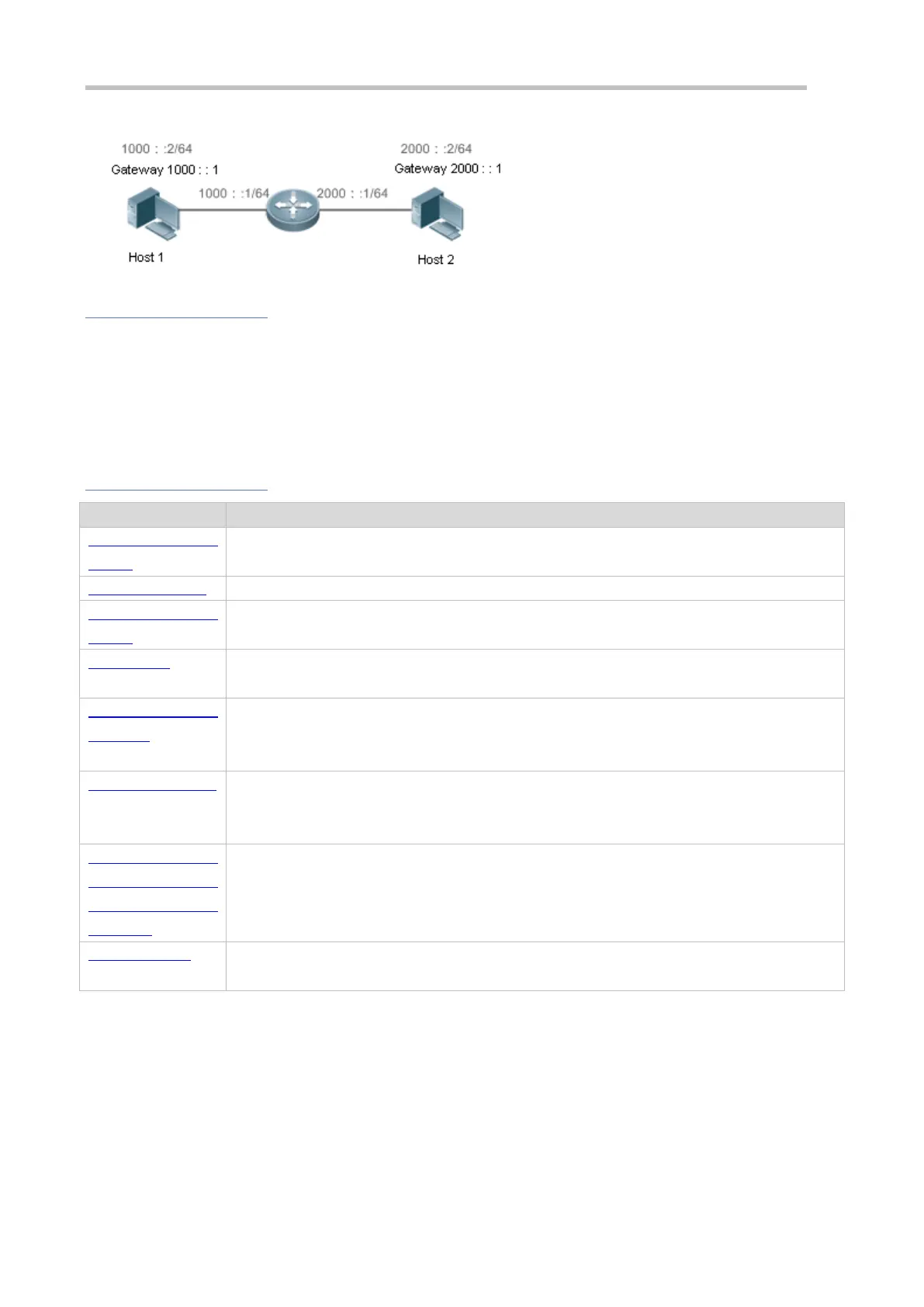Configuration Guide Configuring IPv6
Deployment
Hosts can use the stateless address auto-configuration or DHCPv6 address assignment mode. After addresses are
configured, hosts can communicate with each other using IPv6 addresses.
3.3 Features
Overview
The IPv6 address format makes IPv6 have a larger address space and flexible representation
approach.
IPv6 identifies network applications based on addresses.
IPv6 Packet Header
Format
IPv6 simplifies the fixed and extended packet headers to improve the data packet processing and
forwarding efficiency of the device.
A host dynamically discovers and adjusts the MTU size on the data Tx path, saving router
resources and improving IPv6 network efficiency.
ND functions include router discovery, prefix discovery, parameter discovery, address
auto-configuration, address resolution (like ARP), next-hop determination, Neighbor
Unreachability Detection (NUD), Duplicate Address Detection (DAD), and redirection.
This feature is used to specify the intermediate nodes that a packet passes through along the path
to the destination address. It is similar to the IPv4 loose source routing option and loose record
routing option.
Restricting the
Sending Rate of
ICMPv6 Error
Messages
This feature prevents DoS attacks.
This feature prevents useless unicast packets from being unlimitedly transmitted on the network
and wasting network bandwidth.
3.3.1 IPv6 Address Format
An IPv6 address is represented in the X:X:X:X:X:X:X:X format, where X is a 4-digit hexadecimal integer (16 bits). Each
address consists of 8 integers, with a total of 128 bits (each integer contains 4 hexadecimal digits and each digit contains
four bits). The following are three valid IPv6 addresses:
2001:ABCD:1234:5678:AAAA:BBBB:1200:2100
800:0:0:0:0:0:0:1

